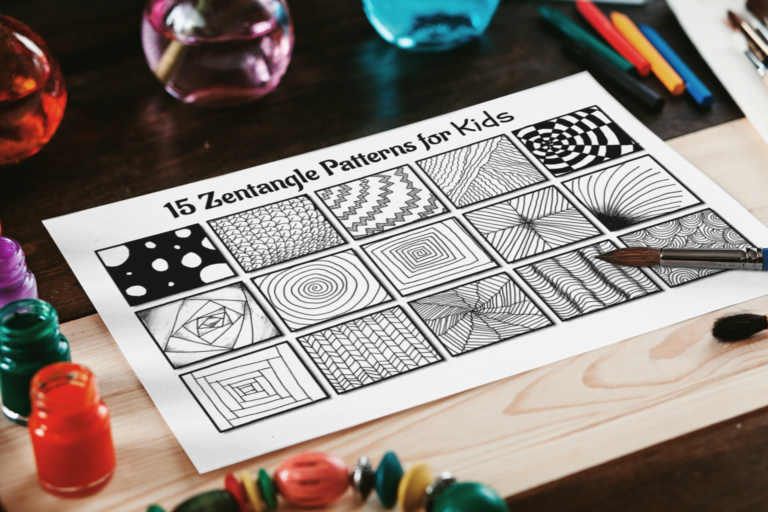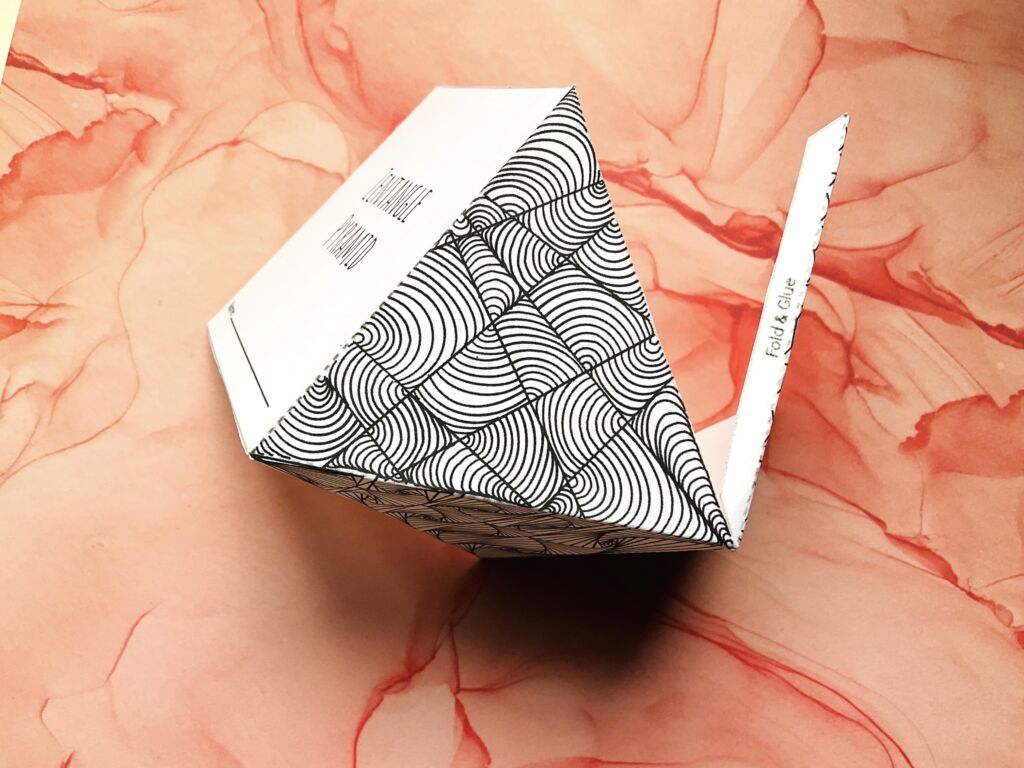
We’re so excited to share these 15 zentangle patterns for beginners with you! I’ve written several blog posts about zentangles because I’ve personally witnessed its calming effects on my daughters and students. I’ve been tangling at home and in the classroom for years but most of the pattern tutorials that I’ve seen have been geared towards adults or experienced zentanglers. So, I thought that my 10 year old daughter and I would create a tutorial for you; one that will teach you a few simple patterns that have been tried and tested by children. We’ve also created 10 free tangle starters for you to use with the zentangle patterns that your children create. Not sure what a tangle starter is or how to use one? Keep reading!

This post may contain affiliate links and I may earn a small commission when you click on the links at no additional cost to you. As an Amazon Affiliate, I earn from qualifying purchases. You can read my full disclaimer here .
Zentangles are based on a theory created by Rick Roberts and Maria Thomas. The word Zentangle originates from the word “zen” meaning calm, and “tangle” meaning a collection of overlapping patterns.
Tangling itself may be relatively new, but the basic principles involved are as old as the history of art. It includes ritual—a core practice in ancient and contemporary arts—and mirrors the symbols, designs, and patterns of numerous cultures (Mayan, Maori, Celtic, and American Indian, for example) from ancient through present times. Similar to doodling, creating a tangle encourages the artist to allow the lines and shapes to flow naturally for supreme expression.
Don’t forget to check out the other 2 parts of our Zentangle series!
Watch the short video below to learn more!

If you answered YES to that question, then you’re going to love our zentangle pyramid activity. Just click HERE or on the images below to check it out!




Tangling has become an international phenomenon because it has been proven to promote relaxation and decrease stress; it also can decrease depression and anxiety, plus tangling can also increase attention span and concentration.

I have several blog posts that discuss the benefits of tangling on the mental health of kids and adults. To explore this topic further, you can take a look at the blog posts below, where I go into depth on the incredible benefits of tangling.
Tip #1 – It’s Okay to Make Mistakes
When creating zentangles, especially using a pen, it’s very common to make squiggles and wonky lines that might seem to throw off your whole design. I encourage you to keep going! Those wonky lines and squiggles add to the uniqueness of your final piece. Incorporate the mistakes into your design because every line has a purpose when zentangling. Keep going!
Tip #2 – Experiment With Different Drawing Utensils
I usually use fine tip sharpies in the classroom with my students because they are versatile and durable. I have also used sharpies at home with my daughters, when zentangling, but we also like to use micron pens. The micron pens have a variety of tip sizes and the ink is significantly richer. The ink is also waterproof, bleed free, quick drying and fade resistant. So these are our new favourite pens for sketching, drawing and illustrations. I encourage you to use what your child/student is comfortable with. Perhaps a marker with a larger tip might be more suitable.
Tip #3 – Take Breaks
Remember that your zentangle does not need to be completed in one sitting. The benefits will still be experienced even if it’s worked on in bite-sized pieces. If your young artist has gotten into a rhythm,while zentangling, encourage them to keep going, but follow their lead. The process should be enjoyable and relaxing!
The designs that we’ll be sharing with you in this tutorial are ones that my daughters and students have enjoyed using. These zentangle patterns for kids can also be used as a guide or reference sheet, while completing tangle starters.